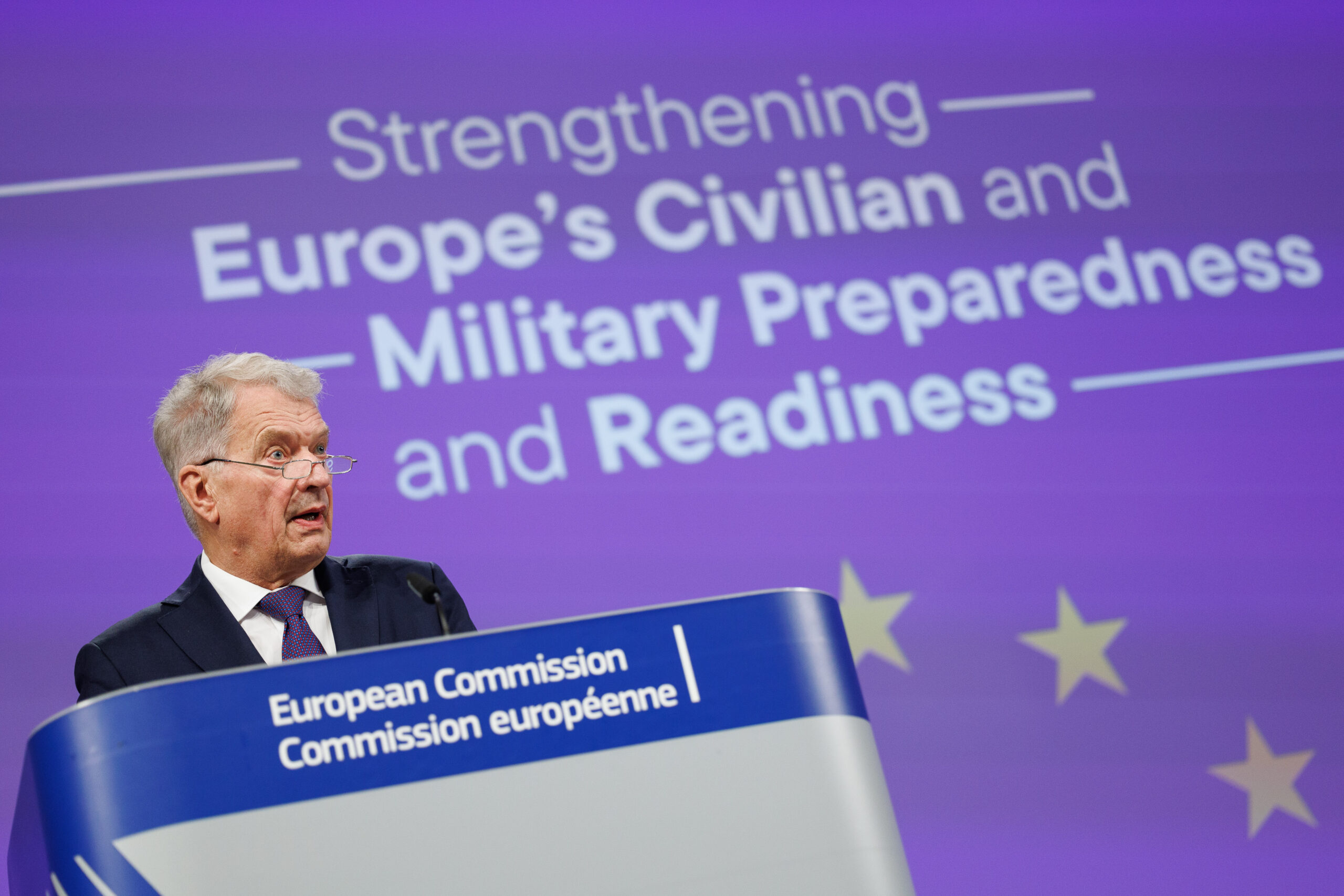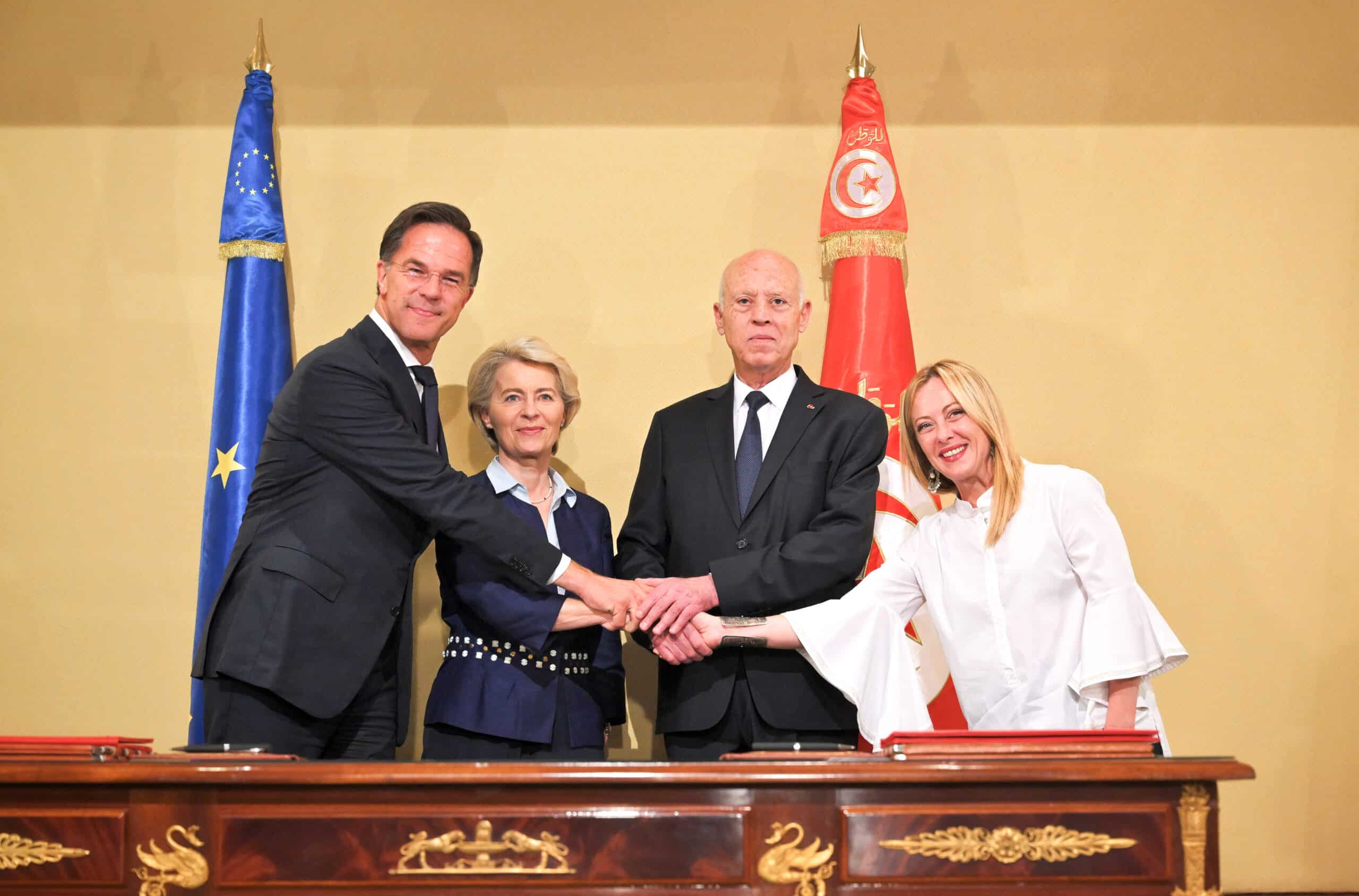Brussels – Former Finnish President Sauli Niinistö presented today (Oct. 30) the report on European defence preparedness and readiness, assigned to him by Ursula von der Leyen last spring. Amid rising geopolitical tensions, hybrid attacks, and the worsening effects of climate change, the EU must move from “reaction to active preparedness.” The first concept to be dismantled is that member states are solely responsible for their own national security. “We must learn to trust each other” is the call made by Niinistö. That means pooling resources and knowledge.
The problem, in essence, is the same one that emerged from the reports on the single market and competitiveness compiled by Mario Draghi and Enrico Letta: member states think for themselves and don’t want to know about making a quantum leap in the integration process. “We need to prepare together for the threats that affect us all and are too big for any one member state to deal with alone,” Niinistö began at a press conference. A European intelligence service and a new common expenditure instrument would be needed to reach the bar identified by the report, namely that “at least 20 per cent of the total EU budget contribute to security and crisis preparedness.” Preparedness “has a cost, but it is less than what we would have to bear if we were to face a major crisis.”

According to Niinistö, a European anti-sabotage network needs to be established to provide support at the request of a member state that is “grappling with serious threats to its critical infrastructure.” And strengthening intelligence cooperation is “essential.” That is why the report recommends that Brussels develop “a proposal on the modalities of a fully-fledged intelligence cooperation service at the EU level.” To date, Niinistö admitted, only “some member states send their information to Brussels, the question is how we can cooperate better.”
However, von der Leyen, who accompanied Niinistö in presenting the report, was the first to pull the brakes on a European intelligence corps. The EU leader limited herself to stressing a “strengthening of information sharing,” well aware of the resistance such a proposal would meet in European chancelleries. Pulling the brakes also on the possibility of using “defence bonds”—new common debt—to finance the report’s many recommendations. There are two ways for the EU leader to finance them: “National contributions or new resources from the EU budget.”
Niinistö himself admitted that, in his talks to draft the document, he had encountered “many critical voices” on the possibility of new joint loans, because some countries refuse to engage in new mechanisms whereby they “take from us and give to others.” The Finnish politician attempted to forestall objections, clarifying that he had not been tasked with “expressing financial opinions,” but rather with triggering a discussion at the level of the 27 to identify “common needs, from which everyone benefits.” The key to circumventing government resistance is to “discuss first whether there are projects important for EU interests,” von der Leyen relaunched, “and then find the political will to finance them. The example brought by both is the construction of a European missile shield.
New civilian and military crisis response planning will have to consider the possibility that Russia might attack the Union. “Putin made it clear 10 years ago that he considers the West weak. We must ensure that he changes his perception,” the former Finnish president stressed. To prepare for the threat of armed aggression against the EU and, consequently, NATO, the two organizations must “clearly define how to work together to rescue the attacked member state.”
English version by the Translation Service of Withub







![Una donna controlla le informazioni sul cibo specificate sulla confezione [foto: archivio]](https://www.eunews.it/wp-content/uploads/2014/12/Etichette-alimentari.jpg)

